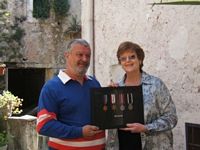Data: 29-09-2001
 Autore: ROBERTO MOLLE
Autore: ROBERTO MOLLE Liste: ARTICLES IN ENGLISH
Liste: ARTICLES IN ENGLISH Categorie: Spigolature
Categorie: Spigolature Tag: #marzo 1944, #giugno 1944, #today, civili, nuova-zelanda
Tag: #marzo 1944, #giugno 1944, #today, civili, nuova-zelandaNEW ZEALANDERS
On the 22 March 1944 the 2nd New Zealand Army Corps launched a last desperate attack on the positions held by the German 1st Division
Paratroopers. This attack also failing, General Alexander, the commander at the head of the Allied Forces in Italy, ordered the suspension of
the attacks on Cassino town and on the Monastery hill.
The fighting had been halted for 48 hours in the Liri Valley, but the Gurkha Battalion was still providing resistance in positions on Hangman’s
Hill. The previous week these troops had been reinforced by some Rajputana fusiliers bringing supplies, and on the Sunday morning men from the
Essex Regiment joined them in the attack on the Abbey before the attack was suspended. For eight days and eight nights these men had held an
area 200 meters wide on the slope without cover; given the extremely close proximity to the Abbey the sole cover from direct fire was the summit
of the hill itself.
During the afternoon of March 24 the injured came down from the hill and were gathered in a small group under the protection of the Red Cross
flag towards Rocca Janula; the Paratroopers allowed them to pass without a firing a shot. At 10.15 the tired Gurkhas began to withdraw from the
hill; 8 officers and 117 soldiers, from the 400 who had attacked the position the week before, came down furtively, covered by artillery fire, to
the ruins of the town, where they arrived at midnight. The third battle of Cassino was over, and because of the heavy losses, the New Zealanders
came into action.
The New Zealand battalion, sent into the field of battle at the request of England to the former colonies who make up the Commonwealth, comprised
the NZ Div Infantry, the 4th Indian Div Infantry and the 78th Div Infantry. In these units were also the special troops like the Maori soldiers
from New Zealand, and the Gurkha soldiers in the Indian Infantry.
In the month of February, 1944, in what was to become considered as the second battle of Cassino, was an intense battle for the 28th Maori
Battalion who, on the 17th day attacked in the direction of the Cassino railway station and after formidable fighting succeeding in reaching the
Rapido River. After midnight the men from this battalion raided the station itself, took prisoners and pushed on further. The first morning light
found them in full view of the German artillery observation points and although under hostile fire they succeeding in digging in and secured the
terrain they had captured.
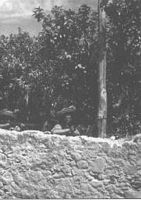
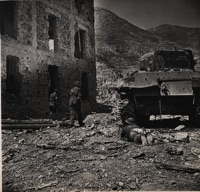
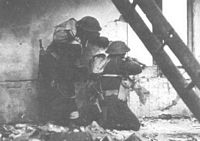
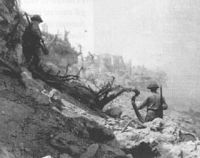

These troops became heavily involved in the second and third battles of Cassino, where they were distinguished for courage and military merit.
But not so distinguished was the military decision of their commanding officer, Bernard Freyberg, in the following destruction of the Abbey of
Montecassino and the bombardment of the town, throwing his troops into a senseless assault against the mountainside which had become impenetrable
because the destruction of the town made it impossible for tanks to pass, allowing the expert German paratroopers to play cat and mouse with the
Allied troops.
Another serious mistake Freyberg made was the fragmented nature of the engagement of the troops, without the opportunity for continuous assault
on their targets. This manner of operation, partly designed to limit the loss of lives, instead resulted in the decimation of the New Zealand
troops. General Von Senger’s comment on this was terse: This battle will most likely be remembered as one of the most
inconceivable plans of war.
The New Zealand troops were a part of the British army, and did not participate further in the front line of battle. After the breakdown of the
front line in May 1944, the Liri Valley provided a field for the reorganisation of the troops. The Canadians were camped in Arce (Fr) and
together with the New Zealanders arrived in the district of Roccasecca. The contact between the soldiers and the local people was very positive
and friendly, and their stories confirm this situation.
* * *
One of these soldiers was Robert Simpson, from Christchurch, New Zealand. He had baptised (christened) Tommaso Ferdinandi, whose family lived in Caprile, Roccasecca (refer to article Caprile at War). The rapport built up with the Ferdinandi family became so close that Tommaso’s parents asked Bob to be a godfather to their baby. Bob accepted with pleasure. Tommaso’s mother is still alive today.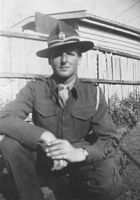
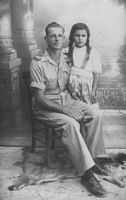
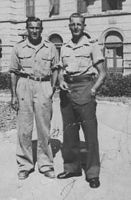
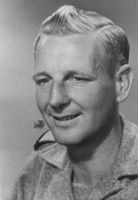
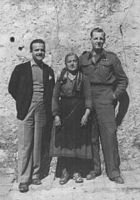
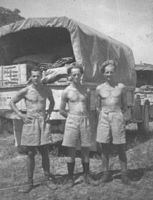
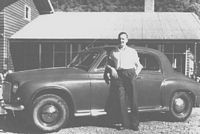
For many years Mr Ferdinandi kept contact by letter with this New Zealand soldier until Bob died in 1964. Tommaso never met Bob
again in person, knowing him only through the photographs and letters from New Zealand that showed his life. The fact that he shared his life in
this way shows how very close he was to this family.
The Ferdinandi family forged another friendship with a Maori soldier who gifted his machete to the head of the family. His name was John Martin
and he came from North Auckland, New Zealand. His brother James had fought with him in Cassino and had been killed on 04.06.1944.
John Martin told how his brother had been killed by a German soldier during a cease-fire and he immediately found and killed that soldier in turn.
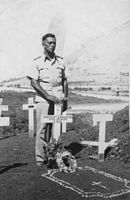
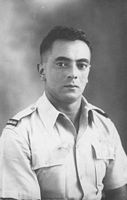
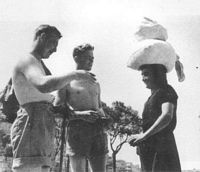
The examples I have recounted to you here show the rapport between the liberating troops and the civilian population emerging
from the turmoil of war. Of course there were also contrasting stories which we will research and document soon.
With sincere thanks to Tommasso Ferdinandi for permission to use his photographs.
Le medaglie di Bob (integrazione del 30 Aprile 2006)
I rapporti di amicizia che si instaurano durante una guerra non si dimenticano e anzi in certi casi continuano anche oltre la morte delle
persone che li hanno instaurati inizialmente: come nel caso di Robert Simpson con la famiglia Ferdinandi.
La nipote del veterano neozelandese, ormai scomparso, visita Tommaso Ferdinandi e gli dona le onoreficenze che furono dello zio.
Nel caso in cui il testo derivi sempicemente dall'esposizione, con o senza traduzione, di documenti/memorie al solo fine di una migliore e più completa fruizione, la definizione Autore si leggerà A cura di.
Articoli associati
QUELLA CORSA VERSO LA STAZIONE SOTTO UNA PIOGGIA DI FUOCO (17 MARZO 1944)
Delle quattro battaglie combattute a Cassino nel 1944, la terza é sicuramente quella con il maggior numero di episodi tattici ben distinti tra loro. Ciascuno di essi costituisce una piccola storia fatta di lotta, coraggio e sacrificio, come l’attacco neozelandese verso la stazione ferroviaria di Cassino.
29/11/2005 | richieste: 12121 | LIVIO CAVALLARO
ARTICLES IN ENGLISH | Le battaglie | #marzo 1944, cassino, nuova-zelanda
La visita in Italia del sig. Eric De Lautour, sessant'anni dopo la guerra, raccontata dalla figlia.
17/04/2005 | richieste: 9601 | KAY DE LAUTOUR
ARTICLES IN ENGLISH | Testimonianze | #today, nuova-zelanda, veterani-reduci
Il 20 maggio 2004 si proponeva come una tipica giornata d’inizio estate: calda e umida. Nel primo
pomeriggio il Primo Ministro Neozelandese Helen Clark, arriva al Cimitero “Inglese” di Cassino, per ricordare i
caduti di quei tragici giorni del 1944. Tra i tanti che caddero, anche gli uomini del 28° Battaglione Maori...
23/07/2004 | richieste: 9393 | VALENTINO MATTEI
ARTICLES IN ENGLISH | Cronache | #today, manifestazioni, maori, nuova-zelanda

